
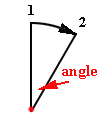
 | "An angle, Lou, has to do with turning! If you take a straight line, say, and turn it about one of its ends, the amount of 'turn' from position 1 to position 2 is the 'angle' between the two lines!" |  |
 | "And if you turn the line until it gets back to where it started, the path of the line forms a circle! The fixed end of the line is the center of the circle, and the path of the moving end of the line along the outside of the circle is the circumference!" |  |
 | "Now, let's divide the circumference into parts. Each part is called an arc. Divide it into 2 equal arcs and what do you have? Two semi-circles. And if you divide it into four equal arcs, each arc is a 'quarter circle' or quadrant. Now comes the fancy part: divide the circumference into 360 equal arcs, and each arc is called a degree! " | 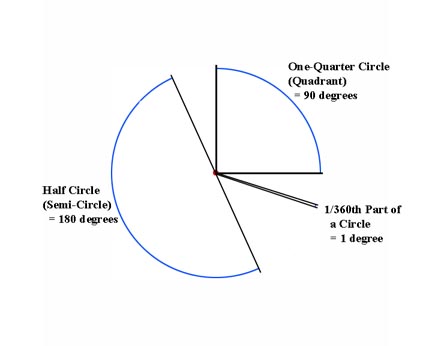 |
 | "Now suppose we want to number each of the 360 degrees...." | 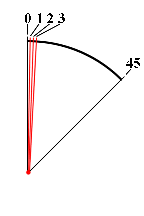 |
 | "How about 'first degree', 'second degree', 'third degree'....! (Heh heh!)" |
 | "Once again, Lou, you've hit it on the head. But 'third' from where? Some place on the circle has to be called the beginning! That is, called zero degrees! And then you can start counting, so every degree has a number. (Numbers of degrees are indicated by a little circle above and to the right of the number; for example seven degrees is 7°.) Notice that 0° is the same as 360° because you've gotten back to where you started. That's the way it is when you go around in a circle!" | 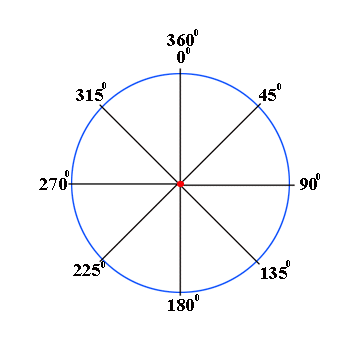 |
|
 | "They are indeed! Suppose you wanted to accurately state the latitude and longitude of a location that doesn't fall exactly on whole degree lines! Such as 'Da Place'! You could use degrees, minutes and seconds!" | 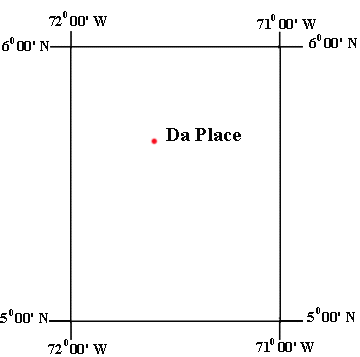 |
 | "Let's start off with just degrees and minutes! Look at points A, E and J! I've listed their latitudes and longitudes in degrees and minutes in the table below!" |  | |||||||
| |||||||||
 | "Now it's your turn, Lou! Look at the diagram and give me the locations of the rest of the points in degrees and minutes of latitude and longitude! Take the quiz, Lou!!" |
 LINK TO QUIZ LINK TO QUIZ |
 | "Once again, very good, Lou!! Now we'll focus on seconds! I've given you another table! This one tells you the locations of A, B and C in degrees, minutes and seconds of latitude and longitude!" |  | |||||||
| |||||||||
 | "Now it's your turn again, Lou! Look at the diagram and give me the locations of the rest of the points in degrees, minutes and seconds of latitude and longitude! Take the quiz, Lou!!" |
 LINK TO QUIZ LINK TO QUIZ |
©
2000
David J. Leveson